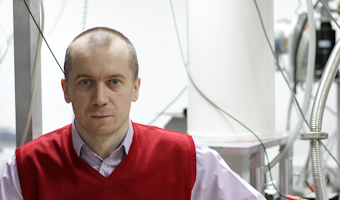The Condensed Matter & Surface Sciences Colloquium Series presents Artur Podhorodecki of Wroclaw University of Science & Technology, on “Lanthanides Doped Inorganic Nanocrystals” on Thursday, May 11, at 4:10 p.m. in Walter 245.

Artur Podhorodecki
Abstract: Over the past decade, high-quality rare earth doped nanocrystals (RENCs) have been successfully synthesized with the rapid development of nanotechnology. Several materials have been successfully applied so far as efficient matrix for RE3+ combinations, where the low crystal field symmetry and low phonon frequency are the main factors defining the best matrix selection. These materials have already found a several potential applications in biology, medicine as well as in photovoltaics and photocatalysis, as the most common examples. However, to change their commercial potential to a real devices still a several problems must be solved, where low emission quantum efficiency (EQE) and control their surface properties are the most important ones. The EQE is directly related with the other challenges in this field: growth of small size <10 nm RENCs, their shape and architecture control. To solve all abovementioned problems the correlation between technological, morphological and physical parameters is needed. This is however a difficult task because the system itself is very complicated and consist number of correlated parameters. In this work, we will discuss synthesis and optical properties of down-shifting NaGdF4 NCs based on Eu3+ emission and NaGdF4 up-converting NCs based on Yb3+-Er3+ emission. We will discuss how to control their size, shape and core-shell architecture. Finally, based on our work on nanocrystals surface functionalization and their toxicity tests we will briefly discuss potential use of RENCs in biology and medicine.
In addition, I will present shortly our activity in the other research fields we are involved: (a) synthesis of ZnSe quantum dots, (b) synthesis of CdSe/CdS quantum dots, rods and plates, (c) synthesis of PbS/CdS quantum dots and (d) optical imaging in NIR spectral range.



















Comments